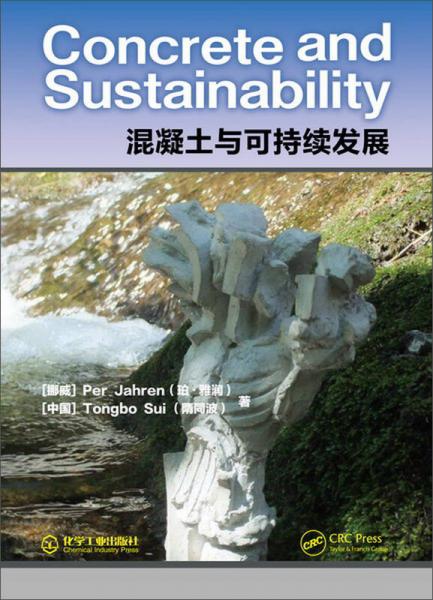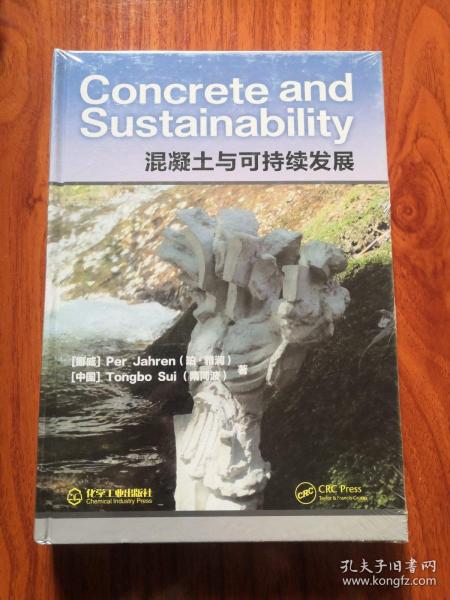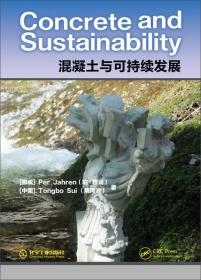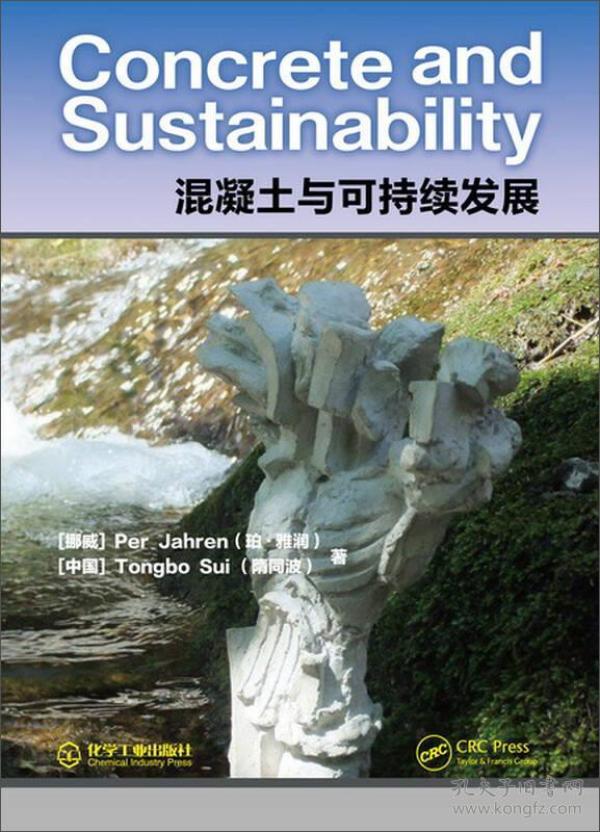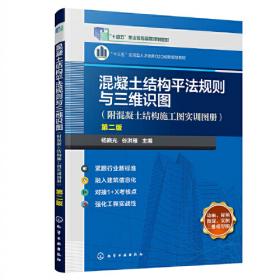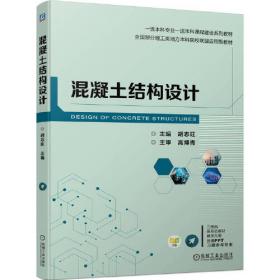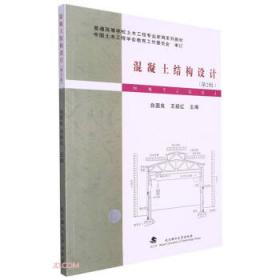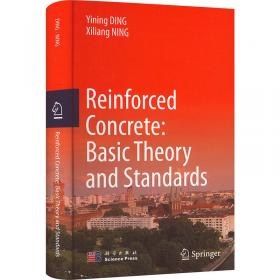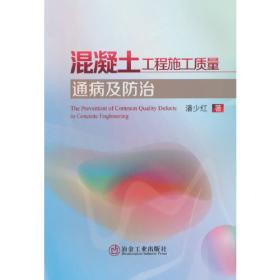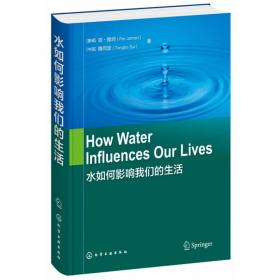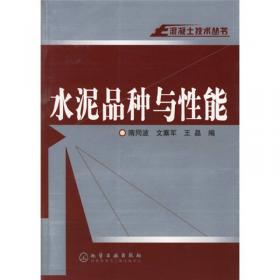混凝土与可持续发展
出版时间:
2013-09
版次:
1
ISBN:
9787122179357
定价:
298.00
装帧:
精装
开本:
16开
纸张:
其他
页数:
440页
正文语种:
英语
9人买过
-
《混凝土与可持续发展》全面分析了世界混凝土可持续发展所面临挑战的复杂性和应对方案的多样性。第一章主要从混凝土对社会与经济发展的作用和影响的角度对混凝土可持续性问题进行了探讨;第二章重点介绍国际范围内混凝土可持续发展所涉及的环境评价工具和方法论,并分析了不同的关注焦点、评价方法和时限对混凝土可持续性的影响;第三、四章着重分析了水泥混凝土领域所面临的排放、捕集与吸收和循环的挑战;第五章分析了其他方面的环境挑战;第六、七章给出了综合评述及未来发展趋势的分析;最后列出了500多条参考文献,以供有兴趣的读者深度查阅。
《混凝土与可持续发展》主要探讨在全球范围内提升混凝土可持续性的系统思考方法和技术途径,以此鼓励和帮助有兴趣的读者(包括政策制定者,建筑与材料领域的专家、工程师,高等学校的教授、学生,以及致力于环境与可持续发展领域的人员等)针对混凝土可持续发展所面临的问题,用系统方法论对其资源可获取性、技术与经济可行性、环境相容性以及社会责任等要素进行全方位的思考和行动。 ForewordbyV.MohanMalhotraxi
ForewordbyWeiSunxiii
Prefacexv
Acknowledgementsxvii
Theauthorsxix
1Introduction
1.1Theeconomicalimpactofconcrete
1.2Concreteandsocialprogress
2Environmentalissues
2.1Global/regional/localaspects
2.2Ratingsystems
2.3Evaluationsystems/tools
2.4ISOmethodology/standards
2.5Variationinfocus
2.5.1Differentsectorsoftheconcreteindustrytendtofocusondifferentaspects
2.5.2Focus:Lifetimeexpectancyperspectives
2.5.3Focus:
2.5.4Focus:
2.6Traditions/testing
2.6.1Example
2.6.2Example
2.6.3Example
3Emissionsandabsorptions
3.1General
3.2CO2emissionfromcementandconcreteproduction
3.3Emissionofothergreenhousegases
3.4Absorption/carbonation
3.5Thetoolsandpossibleactions
3.5.1Increasedutilisationofsupplementarycementingmaterials
3.5.2Flyash
3.5.3Blastfurnaceslag
3.5.4Silicafume
3.5.5Metakaolin
3.5.6Ricehuskash(RHA)
3.5.7Naturalpozzolans
3.5.8Otherashesandslags
3.5.8.1Sewagesludgeincinerationash(SSIA)
3.5.8.2Ferroalloyslag
3.5.8.3Bariumandstrontiumslag
3.5.8.4Othertypesofslag
3.5.8.5Ashesfromco-combustion
3.5.8.6Woodash
3.5.8.7Fluidisedbedash
3.5.9Limestonepowder
3.5.10Othersupplementarycementitiousmaterials
3.5.11Improvementsandmoreefficientcementproduction
3.5.12New/othertypesofcement/binders
3.5.12.1High-belitecement(HBC)
3.5.12.2Sulphurconcrete
3.5.13Increasedcarbonation
3.5.14Betterenergyefficiencyinbuildings
3.5.15Improvedmixturedesign/packingtechnology/waterreduction
3.5.16Increasedbuildingflexibility,andmoresustainabledesignandrecyclingpractice
3.5.17Miscellaneous
3.5.17.1Productionrestrictions
3.5.17.2Thetestingregime
3.5.18Carboncaptureandstorage(CCS)
3.5.18.1Capture
3.5.18.2Storage
3.6Variationinfocus
3.6.1Focus1:Lifetimeexpectancyperspective
3.6.2Focus2:
3.6.3Focus3:
3.7Someconclusions
4Recycling
4.1Recyclingofconcrete
4.1.1Norway
4.1.2Japan
4.1.3TheNetherlands
4.1.4HongKong,China
4.1.5General
4.1.5.1Processingtechnology
4.1.5.2Fines
4.2Recyclingofothermaterialsasaggregateinconcrete
4.2.1Usedrubbertiresinconcrete
4.2.2Aggregatemanufacturedfromfines
4.2.3Processedsugarcaneash
4.2.4Recycledplastic,e.g.,bottles
4.2.5Hempcreteandother“strawconcretes”
4.2.6Papercrete
4.2.7Oilpalmshelllightweightconcrete
4.2.8Glassconcrete
4.2.9Papermillashforself-compactingconcrete(SCC)
4.2.10Slag
4.2.11Recyclingof“doubtful”wasteasaggregate
4.2.12Ironminemillwaste(milltailings)
4.2.13Bauxiteresidue/redsand
4.2.14Copperslag
4.2.15Othermaterials
4.2.16Wastelatexpaint
4.2.17Fillersforself-compactingconcrete
4.3Recyclingofothermaterialsasreinforcementinconcrete
4.4Recyclingofothermaterialsasbindersinconcrete
4.4.1Wasteglass
4.4.2Recyclingoffluidcatalyticcrackingcatalysts
4.5Recyclingofcementkilndust(CKD)
5Theenvironmentalchallenges―otheritems
5.1Aggregateshortage
5.2Durability/longevity
5.3Energysavings
5.4Health
5.4.1Skinburn
5.4.2Thechromiumchallenge
5.4.3Compactionbyvibration
5.4.4Dust
5.4.5Emissionandmoistureinconcrete
5.4.6Formoil
5.4.7NOx-absorbingconcrete
5.4.7.1General
5.4.7.2Principleofreaction
5.4.7.3Thecatalyst
5.4.7.4Theeffects
5.4.7.5Concrete―productareas
5.4.7.6Otherexperiences
5.4.7.7Climatechangeandhealth
5.5Leakage
5.5.1General
5.5.2Leakageofpollutantsfromcementandconcrete
5.5.2.1Leakagefromthecementmanufactureprocess
5.5.2.2Leakagefromconcrete
5.5.3Concretetopreventleakage
5.6Noisepollution
5.6.1Noisereductioninconcreteproduction
5.6.2Noisereductionfromtraffic
5.6.3Reductionofnoisepollutioninbuildings
5.6.4Stepsoundreductioninstairways
5.7Radiation
5.7.1Effectsofradioactiveradiationonthehumanbody
5.7.1.1Alphaparticles(oralpharadiation)
5.7.1.2Betaparticles
5.7.1.3X-raysandgammarays
5.7.2Naturalradioactivityinbuildingmaterials
5.7.3Radiationfromcementandconcrete
5.7.4Radioactivityriskreductionwithcementandconcrete
5.7.4.1Concreteasashieldofradiation
5.7.4.2Encapsulationofradioactivematerialswithcementandconcrete
5.7.5Clearanceofradioactiveconcrete
5.8Safety
5.8.1Concreteasasafetytool
5.8.2Concretesafetylevelsinaclimatechangeperspective
5.9Water
5.9.1Watershortage
5.9.2Managingtheincreasedprecipitation
5.9.2.1Perviousconcrete
5.9.2.2Perviousgroundwithconcretepaversystems
5.9.2.3Delayingsystems
5.9.3Reuseofwashwaterfromconcreteproduction
5.9.4Escapeofwashwaterfromconcreteproductiontofreshwaterandthesea
5.9.5Foodsupply―artificialfishreefs(AFRs)
5.9.5.1History
5.9.5.2WherehaveAFRsbeenused?
5.9.5.3MotivationsforestablishingAFRs
5.9.5.4Designfactors
5.9.5.5Someexamples
5.9.5.6Restorationofcoralreefs
5.9.5.7TheTjuvholmenproject
5.9.6Erosionprotection
5.10Wastes
6Newpossibilitiesandchallenges
6.1Smallhydroelectricpowerstations
6.2Windmills
6.3Newrawmaterials/lowenergyandlowCO2cements
6.3.1Principleforclinkercompositiondesign
6.3.2Lowerenergyandlow-emissionclinkerpreparation
6.3.3PerformanceevaluationofHBC
6.3.3.1Strength
6.3.3.2Heatevolutioncharacteristics
6.3.3.3Chemicalcorrosionresistance
6.3.3.4Dryingshrinkage
6.3.3.5ExistingstandardsforHBC
6.3.3.6SimplifiedexplanationfortheexcellentperformanceofHBC
6.3.4Latestresultsonbelite-calciumSulfoaluminate(BCSA)cement
6.4Newconcreteproductsandcomponents
7Thefuture
References
Index
-
内容简介:
《混凝土与可持续发展》全面分析了世界混凝土可持续发展所面临挑战的复杂性和应对方案的多样性。第一章主要从混凝土对社会与经济发展的作用和影响的角度对混凝土可持续性问题进行了探讨;第二章重点介绍国际范围内混凝土可持续发展所涉及的环境评价工具和方法论,并分析了不同的关注焦点、评价方法和时限对混凝土可持续性的影响;第三、四章着重分析了水泥混凝土领域所面临的排放、捕集与吸收和循环的挑战;第五章分析了其他方面的环境挑战;第六、七章给出了综合评述及未来发展趋势的分析;最后列出了500多条参考文献,以供有兴趣的读者深度查阅。
《混凝土与可持续发展》主要探讨在全球范围内提升混凝土可持续性的系统思考方法和技术途径,以此鼓励和帮助有兴趣的读者(包括政策制定者,建筑与材料领域的专家、工程师,高等学校的教授、学生,以及致力于环境与可持续发展领域的人员等)针对混凝土可持续发展所面临的问题,用系统方法论对其资源可获取性、技术与经济可行性、环境相容性以及社会责任等要素进行全方位的思考和行动。
-
目录:
ForewordbyV.MohanMalhotraxi
ForewordbyWeiSunxiii
Prefacexv
Acknowledgementsxvii
Theauthorsxix
1Introduction
1.1Theeconomicalimpactofconcrete
1.2Concreteandsocialprogress
2Environmentalissues
2.1Global/regional/localaspects
2.2Ratingsystems
2.3Evaluationsystems/tools
2.4ISOmethodology/standards
2.5Variationinfocus
2.5.1Differentsectorsoftheconcreteindustrytendtofocusondifferentaspects
2.5.2Focus:Lifetimeexpectancyperspectives
2.5.3Focus:
2.5.4Focus:
2.6Traditions/testing
2.6.1Example
2.6.2Example
2.6.3Example
3Emissionsandabsorptions
3.1General
3.2CO2emissionfromcementandconcreteproduction
3.3Emissionofothergreenhousegases
3.4Absorption/carbonation
3.5Thetoolsandpossibleactions
3.5.1Increasedutilisationofsupplementarycementingmaterials
3.5.2Flyash
3.5.3Blastfurnaceslag
3.5.4Silicafume
3.5.5Metakaolin
3.5.6Ricehuskash(RHA)
3.5.7Naturalpozzolans
3.5.8Otherashesandslags
3.5.8.1Sewagesludgeincinerationash(SSIA)
3.5.8.2Ferroalloyslag
3.5.8.3Bariumandstrontiumslag
3.5.8.4Othertypesofslag
3.5.8.5Ashesfromco-combustion
3.5.8.6Woodash
3.5.8.7Fluidisedbedash
3.5.9Limestonepowder
3.5.10Othersupplementarycementitiousmaterials
3.5.11Improvementsandmoreefficientcementproduction
3.5.12New/othertypesofcement/binders
3.5.12.1High-belitecement(HBC)
3.5.12.2Sulphurconcrete
3.5.13Increasedcarbonation
3.5.14Betterenergyefficiencyinbuildings
3.5.15Improvedmixturedesign/packingtechnology/waterreduction
3.5.16Increasedbuildingflexibility,andmoresustainabledesignandrecyclingpractice
3.5.17Miscellaneous
3.5.17.1Productionrestrictions
3.5.17.2Thetestingregime
3.5.18Carboncaptureandstorage(CCS)
3.5.18.1Capture
3.5.18.2Storage
3.6Variationinfocus
3.6.1Focus1:Lifetimeexpectancyperspective
3.6.2Focus2:
3.6.3Focus3:
3.7Someconclusions
4Recycling
4.1Recyclingofconcrete
4.1.1Norway
4.1.2Japan
4.1.3TheNetherlands
4.1.4HongKong,China
4.1.5General
4.1.5.1Processingtechnology
4.1.5.2Fines
4.2Recyclingofothermaterialsasaggregateinconcrete
4.2.1Usedrubbertiresinconcrete
4.2.2Aggregatemanufacturedfromfines
4.2.3Processedsugarcaneash
4.2.4Recycledplastic,e.g.,bottles
4.2.5Hempcreteandother“strawconcretes”
4.2.6Papercrete
4.2.7Oilpalmshelllightweightconcrete
4.2.8Glassconcrete
4.2.9Papermillashforself-compactingconcrete(SCC)
4.2.10Slag
4.2.11Recyclingof“doubtful”wasteasaggregate
4.2.12Ironminemillwaste(milltailings)
4.2.13Bauxiteresidue/redsand
4.2.14Copperslag
4.2.15Othermaterials
4.2.16Wastelatexpaint
4.2.17Fillersforself-compactingconcrete
4.3Recyclingofothermaterialsasreinforcementinconcrete
4.4Recyclingofothermaterialsasbindersinconcrete
4.4.1Wasteglass
4.4.2Recyclingoffluidcatalyticcrackingcatalysts
4.5Recyclingofcementkilndust(CKD)
5Theenvironmentalchallenges―otheritems
5.1Aggregateshortage
5.2Durability/longevity
5.3Energysavings
5.4Health
5.4.1Skinburn
5.4.2Thechromiumchallenge
5.4.3Compactionbyvibration
5.4.4Dust
5.4.5Emissionandmoistureinconcrete
5.4.6Formoil
5.4.7NOx-absorbingconcrete
5.4.7.1General
5.4.7.2Principleofreaction
5.4.7.3Thecatalyst
5.4.7.4Theeffects
5.4.7.5Concrete―productareas
5.4.7.6Otherexperiences
5.4.7.7Climatechangeandhealth
5.5Leakage
5.5.1General
5.5.2Leakageofpollutantsfromcementandconcrete
5.5.2.1Leakagefromthecementmanufactureprocess
5.5.2.2Leakagefromconcrete
5.5.3Concretetopreventleakage
5.6Noisepollution
5.6.1Noisereductioninconcreteproduction
5.6.2Noisereductionfromtraffic
5.6.3Reductionofnoisepollutioninbuildings
5.6.4Stepsoundreductioninstairways
5.7Radiation
5.7.1Effectsofradioactiveradiationonthehumanbody
5.7.1.1Alphaparticles(oralpharadiation)
5.7.1.2Betaparticles
5.7.1.3X-raysandgammarays
5.7.2Naturalradioactivityinbuildingmaterials
5.7.3Radiationfromcementandconcrete
5.7.4Radioactivityriskreductionwithcementandconcrete
5.7.4.1Concreteasashieldofradiation
5.7.4.2Encapsulationofradioactivematerialswithcementandconcrete
5.7.5Clearanceofradioactiveconcrete
5.8Safety
5.8.1Concreteasasafetytool
5.8.2Concretesafetylevelsinaclimatechangeperspective
5.9Water
5.9.1Watershortage
5.9.2Managingtheincreasedprecipitation
5.9.2.1Perviousconcrete
5.9.2.2Perviousgroundwithconcretepaversystems
5.9.2.3Delayingsystems
5.9.3Reuseofwashwaterfromconcreteproduction
5.9.4Escapeofwashwaterfromconcreteproductiontofreshwaterandthesea
5.9.5Foodsupply―artificialfishreefs(AFRs)
5.9.5.1History
5.9.5.2WherehaveAFRsbeenused?
5.9.5.3MotivationsforestablishingAFRs
5.9.5.4Designfactors
5.9.5.5Someexamples
5.9.5.6Restorationofcoralreefs
5.9.5.7TheTjuvholmenproject
5.9.6Erosionprotection
5.10Wastes
6Newpossibilitiesandchallenges
6.1Smallhydroelectricpowerstations
6.2Windmills
6.3Newrawmaterials/lowenergyandlowCO2cements
6.3.1Principleforclinkercompositiondesign
6.3.2Lowerenergyandlow-emissionclinkerpreparation
6.3.3PerformanceevaluationofHBC
6.3.3.1Strength
6.3.3.2Heatevolutioncharacteristics
6.3.3.3Chemicalcorrosionresistance
6.3.3.4Dryingshrinkage
6.3.3.5ExistingstandardsforHBC
6.3.3.6SimplifiedexplanationfortheexcellentperformanceofHBC
6.3.4Latestresultsonbelite-calciumSulfoaluminate(BCSA)cement
6.4Newconcreteproductsandcomponents
7Thefuture
References
Index
查看详情
-
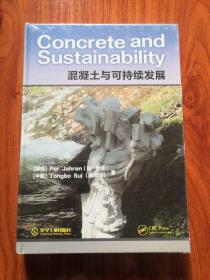 3
3
全新
北京市通州区
平均发货6小时
成功完成率97.07%
-
 4
4
2013-09 印刷
印次: 1
全新
北京市朝阳区
平均发货4小时
成功完成率97.79%
-
 2
2
全新
-
 4
4
2013-09 印刷
全新
北京市朝阳区
平均发货35小时
成功完成率85.12%
-
 2
2
全新
-
全新
湖南省长沙市
平均发货15小时
成功完成率88.53%
-
全新
湖南省长沙市
平均发货15小时
成功完成率88.53%
-
全新
广东省广州市
平均发货10小时
成功完成率89.18%
-
全新
北京市丰台区
平均发货24小时
成功完成率81.88%

 占位居中
占位居中

